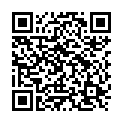|
|
|
| Module code: DBMAB-220 |
|
|
48UV+24UU (72 teaching units) |
|
6 |
| Academic Year: 2 |
| Mandatory course: yes |
Language of instruction:
German |
Assessment:
• Graded exam (Duration 120 min., 100 pts.)
o This exam will be written in the 3rd semester (Block 3B) according to the examination schedule.
o Distribution
- 67 pts. (80 min) for “Dynamik-1” (Dynamics 1)
- 33 pts. (40 min) for “Dynamik-2” (Dynamics 2)
Prerequisites for receiving credits:
The achievement of at least 40 out of 100 points in the module exam.
The grade corresponds to the student’s performance in the module exam and is shown as a decimal grade according to the htw saar grading scheme.
[updated 28.04.2023]
|
DBMAB-220 (P720-0028) Mechanical Engineering / Production Technology, Bachelor, ASPO 01.10.2021
, study year 2, mandatory course
|
|
The total student study time for this course is 180 hours.
|
Recommended prerequisites (modules):
None.
|
Recommended as prerequisite for:
|
Module coordinator:
Prof. Dr.-Ing. Jan Christoph Gaukler |
Lecturer:
Lehrbeauftragte
[updated 11.11.2025]
|
Learning outcomes:
After successfully completing this module, students will have consolidated, deepened and expanded their understanding of mechanical relationships with regard to the “description and calculation of the spatial motion of point masses and rigid bodies” and “collision processes”. They will be able to describe and calculate vibrations of machine parts. They will be able to analyze engineering problems of intermediate complexity in the field of dynamics, to reduce them to basic physical principles and work out targeted solutions, so that they can design and dimension moving machines or machines with moving elements.
[updated 28.04.2023]
|
Module content:
Dynamik-1 (Dynamics 1):
• Review of the dynamics of a mass point
• Kinetics of a system of mass points - consolidation
o Center of mass theorem, Varignon’s theorem, principle of work and energy
o Centric collision
o Bodies with variable mass
• Motion of a rigid body
o Kinematic basics: Translation, rotation, general motion, instantaneous center
o Kinetics of rotation around a fixed axis: Varignon´s theorem, moment of inertia, work, energy, power
o Planar kinetics: Varignon´s theorem, momentum, principles of energy and work, eccentric collision
o Kinetics of spatial motion: Varignon´s theorem, angular momentum, inertia tensor, Euler´s equations, bearing reactions in plane motion, momentum-free gyro
Dynamics 2:
• Free oscillations (undamped, damped) with one degree of freedom
• Forced oscillations (undamped, damped) with one degree of freedom Force and mass force excitation, magnification function, resonance
• Examples of vibrations of machine parts from practice
• Free oscillations in systems with two and more degrees of freedom
• Forced oscillations in systems with two and more degrees of freedom Resonance, damping, apparent resonance
[updated 28.04.2023]
|
Teaching methods/Media:
Lecture: Lecture, demonstration, working on specific problems in groups.
Exercises: Solving specific problems in groups
[updated 28.04.2023]
|
Recommended or required reading:
• D. Gross, W. Hauger, J. Schröder, W. Wall: Technische Mechanik 3: Kinetik (Springer)
• R. C. Hibbeler: Technische Mechanik 3 – Dynamik (Pearson)
• H. Dresig, F. Holzweißig: Maschinendynamik, Springer-Verlag
• M. Knaebel, H. Jäger, R. Mastel: Technische Schwingungslehre, Springer Vieweg
[updated 28.04.2023]
|

